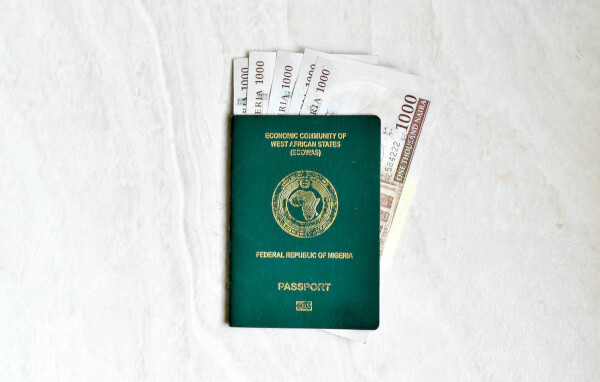Wise x Joe Thomas’ guide to the ultimate stag or hen do
Thinking of combining your pre-nuptial celebrations in a sten do? Read expert tips from Wise and Inbetweeners' actor Joe Thomas on a united stag and hen do.

Chapter 3 of 5. Read the full report here.
In the past, the only way to compete with a bank was to set up another bank. Now technology means that anything can be built anywhere: there’s no need for a central control, each problem can be solved independently. With the regulatory landscape and consumer expectations starting to change, the first wave of disruptors entered the field. These disruptors are each targeting just one part of the banking experience and creating something better.
This is the first phase of the unbundling of banking and will continue to shake up the sector over the next five years. Banks make a huge proportion of their profits in consumer banking by opaquely bundling services together. Bringing in customers through free or heavily subsidized current accounts, they then use hidden charges on the bundled services to make a profit: everything from overdrafts to payments, from ATMs to investment management.
A report by the UK's Competition and Markets Authority (CMA) revealed that personal current accounts, despite being advertised as free, generate banks around £8 billion a year in revenue, which consumers pay in overdraft charges, foreign transaction charges and foregone interest. New players are taking each segment, taking away the hidden charges and dramatically improving the experience for customers.
The first segments to see significant disruption are: lending, particularly to small businesses; investment management and international payments. These have been the first to be unbundled because the offerings from the incumbents have been so unfair for consumers - and, in the case of payments, with a better solution already available. Customers always knew that they were getting a bad deal but simply had no real alternative. In the US, bank lending to small firms fell by $116 billion from June 2008 to $543 billion in June 2011, a decline of almost 18% In the EU, between 2008 and 2012 the cost of borrowing for small businesses more than doubled versus the costs for large businesses. That tightening of credit and ratcheting up of costs made it easy for new entrants like Funding Circle and Lending Club to come in and take a share because customers were actively looking for alternatives to the traditional banking options.
A similar situation came about in investment management. A report published in the summer of 2015 by S&P Capital IQ found that only 27% of actively managed large-cap funds beat the S&P 500 in the first half of 2014. In addition, research has shown that mutual fund expenses and adviser fees account for over 2% of industry returns annually, meaning that total costs comes to 40% of expected return lost to expenses. Another segment where customers were getting a raw deal and they knew it. For international payments, where we launched Wise in 2011, it was very clear that we were offering an innovative alternative to a broken system. Consumer to consumer payment revenues account for 8% of all global payment industry transaction revenues every year according to McKinsey – about $45 billion annually. However, consumer to consumer volumes represent just 0.0017% of total global payment transaction volumes. That’s a huge disconnect.
On average, the revenue margins in the consumer to consumer space are 30 times larger than in the business to business space and in June 2015, the average cost of sending a remittance was 7.68% according to the World Bank. In the US, P2P loan origination has doubled every year since 2010 to $12 billion in 2014 as disruptors gain traction in the space. Europe is the next big market for P2P lending: the alternative finance market in Europe reached nearly €3 billion ($3.9 billion) in 2014, a 144% jump. Small-business P2P loan volume in France grew almost 4,000% last year, to reach €8.2 million ($10.6 million).
The same incredible growth has been seen in investment management. From relative obscurity just a few years ago, robo-advisers like Wealthfront, Betterment and Nutmeg now have significant assets under management. Collectively, the robo-advisors managed just under $20 billion in assets at the end of 2014.
And in international payments?
At Wise we’ve seen incredible growth. At the end of 2015 we were transferring more than £500 million a month for our customers. There’s no doubt that new players are starting to make their presence felt. This will speed up rapidly in the next twelve months. In five years, we will no longer be talking about billions, but trillions.
According to industry analysis, P2P lending will stand at between $150 billion and $490 billion globally by 2020; assets under management by robo advisers are estimated to increase 68 percent annually to about $2.2 trillion in five years. If cross border payments margins were to align with domestic payment margins the cost to the payments industry would be $150bn. Based on current growth rates in traditional remittance corridors, digital remittance volumes will hit $165 billion a year annually by 2020 and, according to one Goldman Sachs report, 20% of cross border payment industry revenues will be under threat from new players like Wise over the same period.
What does all this mean?
More people will enjoy better pricing and a vastly improved system. It took Skype ten years to secure 40% share of the telecommunications market.
In five - ten years, we can expect fintech companies to achieve the same in the financial sector. For the banks, this means a significant proportion of revenue will have been lost with one estimate suggesting 7% of annual profits at risk.
*Please see terms of use and product availability for your region or visit Wise fees and pricing for the most up to date pricing and fee information.
This publication is provided for general information purposes and does not constitute legal, tax or other professional advice from Wise Payments Limited or its subsidiaries and its affiliates, and it is not intended as a substitute for obtaining advice from a financial advisor or any other professional.
We make no representations, warranties or guarantees, whether expressed or implied, that the content in the publication is accurate, complete or up to date.

Thinking of combining your pre-nuptial celebrations in a sten do? Read expert tips from Wise and Inbetweeners' actor Joe Thomas on a united stag and hen do.

Organising a stag or a hen do? Here are our top tips from Inbetweeners' actor Joe Thomas and Wise on keeping costs down and keeping it classy.

Organising a stag or hen that fits everyone's budget can be a 'mare. Read our expert guide from Wise and Inbetweeners' actor Joe Thomas on budgeting like a boss

Got plenty of moolah for a stag or hen do? Check out this exclusive guide from Wise and Inbetweeners' actor Joe Thomas on exotic locations for splashing cash
10 years down, and now over 10 million of you have joined our mission of money without borders. There’s also 2,400 Wisers across 15 offices working to make...

Still using a bank or broker to send money? Chances are you're overpaying. Traditional providers are deceptively expensive because they use bad exchange...